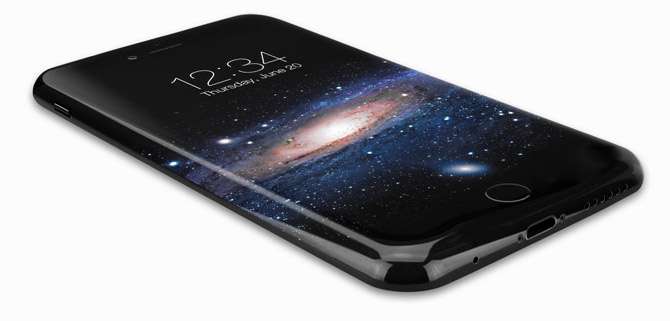 3336
3336
 2017-01-11
2017-01-11

More reports are mounting to indicate that Apple's next iPhone might be mostly glass.
To be sure, Apple is tight-lipped about its future products, and rarely gives hints at its future plans. Indeed, a report from The Wall Street Journal in late November indicated that Apple may be considering up to 10 prototypes of its next iPhone.
Still, a glass iPhone has been widely speculated to be a possibility for the company. Here are some reasons that have been tossed around.
Visual appeal
Glass is shiny and commonly mass-produced — and that could help extend the popular glossy look of the iPhone 7 Plus to all colors of the iPhone lineup, top Apple analyst Ming-Chi Kuo of KGI Securities wrote in September.
Apple's new "jet black" finish," debuted in September, was billed by Apple's design chief as "seamless from the glass to the back" and the flashy color sold out of initial quantities before it even hit stores. But the finish also has a special manufacturing process and scratches easily, compared to glass.
Pressure to innovate
Wall Street is betting that Apple will bounce back from its sluggish 2016 iPhone sales. Analysts from Nomura, Credit Suisse and others have predicted a revolutionary new iPhone will spur a "supercycle" for the company.
In May, Pacific Crest analysts wrote that "differentiation" of iPhones through marketing and a glass-like appearance "are more sustainable differentiators than technology, in our view, because they appeal to consumers' vanity and desire for status."
More screen space and shapes
Thanks to innovations in screen technology, phones can now have wraparound screens, like the OLED screens used by the Samsung Galaxy Edge series. Several reports have indicated that Apple may move toward these more colorful screens.
A push toward augmented reality
Apple CEO Tim Cook has already indicated his interest in augmented reality. Glass is see-through — which means a glass iPhone could potentially have transparent panels to augment reality, in combination with some of Apple's new camera technology. This idea may seem out there, but Apple has already patented covers that leave both the front and back panels of an iPhone exposed.
Source: CNBC